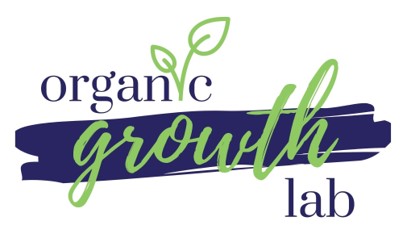Did you know that 70% of SaaS companies face challenges with SEO, often due to common, preventable mistakes?
You might think you’re doing everything correctly, but overlooking keyword research or failing to optimize for user intent can significantly impact your search rankings.
It’s vital to understand these pitfalls to guarantee your SEO strategy is successful. Let’s take a look at the essential steps you need to take to avoid these errors and improve your SEO performance.
Want to skip the learning curve and have us handle SEO for you? Click here to learn more about our SaaS SEO services.
Understanding Customer Needs

Understanding your customers’ needs is crucial for effective SaaS SEO. Start by identifying what your audience is searching for and incorporate those insights into your keywords and content.
Importance of Customer-Centric SEO
To truly excel in SaaS SEO, you must place a strong emphasis on customer-centric strategies. Understanding customer needs is crucial because it allows you to tailor your content to address specific queries and pain points effectively.
Begin with thorough keyword research to uncover what your target audience is searching for. Tools like Google Keyword Planner and Ahrefs can help you identify keywords that reflect user intent, securing your content aligns with what customers are actually looking for.
By focusing on user intent, you’ll create valuable content that resonates with your audience, driving organic traffic and engagement. It’s not just about ranking for keywords; it’s about providing solutions that meet your customers’ needs.
Analyzing macro trends in your industry can offer insights into evolving preferences, helping you stay ahead of the curve and continually refine your SEO strategy.
Aligning your SEO planning with audience search queries secures your content is both relevant and impactful. This customer-centric approach liberates you from outdated SEO tactics and sets you on a path to genuine connection with your audience, fostering trust and long-term engagement.
Prioritize your customers, and your SEO efforts will naturally flourish.
Methods to Identify Customer Needs
Recognizing customer needs starts with a keen observation of their search behaviors and preferences. To truly understand what your audience wants, you need to delve deep into the intent behind search queries. This means looking beyond just the keywords and figuring out the underlying questions and problems your potential customers are trying to solve.
Leveraging keyword research tools like Ahrefs, SEMrush, and Moz can give you invaluable insights into these search patterns. These tools help you uncover long-tail keywords that reflect user intent, making your content more relevant and engaging. By focusing on these long-tail keywords, you guarantee that your content meets specific customer needs rather than just general interests.
Analyzing macro trends in your industry is another crucial step. By staying informed about these broader movements, you can align your SEO strategy to resonate with evolving customer needs. This proactive approach not only keeps your content fresh but also positions your SaaS product as a forward-thinking solution.
Ultimately, understanding customer needs is an ongoing process. Adapt your SEO strategies based on changing user behaviors to maintain relevance and engagement. This commitment to understanding and meeting customer needs will liberate you from common SEO pitfalls.
Incorporating Insights into SEO Strategy
When you integrate insights about customer needs into your SEO strategy, you’re not just improving search rankings but also enhancing the overall user experience. Understanding what your audience wants allows you to tailor your content to address specific user queries and intent, making it more relevant and valuable.
To effectively incorporate these insights, start by researching audience demographics and preferences. Knowing who your users are helps you create targeted content that resonates.
- Analyze customer feedback: Use surveys, reviews, and direct communication to gain insights into what your audience values.
- Monitor search trends: Keep an eye on what users are searching for in your industry to stay ahead of the curve.
- Study user behavior: Use analytics tools to understand how users interact with your site and content.
Effective Keyword Research
Effective keyword research is crucial for your SaaS SEO strategy because it helps you understand what your potential customers are searching for. Using the right tools and techniques, you can identify long-tail keywords that align with specific search intents, leading to better audience targeting and higher conversion rates.
Start by prioritizing these keywords to guarantee your content meets user needs and stands out in search results.
Why Keyword Research Matters
Understanding why keyword research matters is crucial for the success of your SaaS SEO strategy. It’s not just about selecting random words; it’s about delving deep into what your users are searching for. Effective keyword research focuses on grasping user intent, which means you’re pinpointing the precise queries potential customers use. This leads to higher relevance and better traffic.
Long-tail keywords play a vital role here. They make up 70% of search queries and offer superior conversion rates with lower competition. By targeting these specific phrases, you not only attract more qualified leads but also improve your chances of ranking higher on search engines.
Here’s why keyword research should be your top priority:
- Understand User Intent: Recognize what your audience is searching for and why.
- Optimize with Tools: Utilize SEMrush and Ahrefs to uncover high-value keywords.
- Improve Conversion Rates: Concentrate on long-tail keywords for focused traffic.
Tools and Techniques:
To improve your SaaS SEO strategy, leveraging the right tools and techniques for keyword research is indispensable. You’ve got to utilize tools like Google Keyword Planner, Ahrefs, SEMrush, and Moz.
These platforms will help you uncover the keywords that matter most to your audience, giving you a competitive edge. Don’t get stuck in the rut of generic, high-competition keywords.
Instead, focus on long-tail keywords. They’re more specific, less competitive, and better reflect user intent, which means they’re more likely to drive quality traffic to your site.
Your goal is to understand what your users are searching for and why. This insight will empower you to create content that resonates with their needs. By incorporating these targeted keywords naturally into your content, you’ll not only improve your SEO performance but also boost user satisfaction.
Aligning Keywords with Search Intent
Discovering the true potential of your SaaS SEO strategy starts with aligning your keywords with user search intent. Effective keyword research is more than just selecting popular terms; it’s about comprehending the intent behind user search queries.
When you align your keywords with what users are genuinely searching for, you attract relevant traffic to your site and increase the likelihood of conversions.
To align your keywords with search intent, consider these steps:
- Analyze User Intent: Delve deeply into what your target audience is searching for. Are they seeking information, comparing options, or ready to purchase?
- Target Long-Tail Keywords: These specific phrases often match user intent more accurately, improving your search visibility and attracting qualified leads.
- Optimize Content for Intent: Ensure your content addresses the needs reflected in the user search queries, enhancing engagement and conversion.
Quality Over Quantity Content

Prioritize quality over quantity to meet evolving content standards.
Focus on crafting high-quality material that truly resonates with your target audience and covers various content types like blogs, videos, and infographics.
Consistent, valuable content will build trust and improve your SEO performance.
Evolving Content Standards
Many SaaS businesses fall into the trap of churning out large quantities of content, mistakenly believing it will improve their search rankings. However, focusing on content quality over quantity is crucial for true SEO success.
High-quality content not only enriches user engagement but also elevates your search engine rankings. When your content is comprehensive and valuable, it resonates better with your target audience, making it more relevant and giving you a competitive edge.
To break free from the cycle of content overload, consider these points:
- Prioritize user needs: Craft content that provides valuable insights and addresses user pain points to boost brand credibility.
- Regular updates: Continuously optimize and update your content to maintain relevance and stay competitive in search results.
- Organic traffic increase: Quality content drives more organic traffic and conversions, contributing significantly to your SaaS SEO strategy.
Liberate your content strategy by focusing on what truly matters. Instead of overwhelming your audience with quantity, aim for quality that enthralls and engages. By doing so, you’ll not only improve user engagement but also climb higher in search engine rankings, ultimately leading to greater success for your SaaS business.
Creating High-Quality Content:
Prioritizing quality over quantity in your content creation is crucial for SEO success. Google rewards thorough, valuable content that truly addresses user needs. That means focusing on audience-centric content is essential.
When you produce premium content, you’re not just filling space; you’re engaging your audience and meeting their needs, which in turn elevates your rankings.
Valuable content is what sets you apart from competitors. By honing in on what your users are searching for and delivering answers that resonate, you improve user experience and engagement. This audience-centric approach keeps your visitors coming back, increasing organic traffic and conversion rates.
Premium content doesn’t just help with SEO; it enriches your brand’s reputation and authority in your industry.
Consistency in maintaining top-quality content will liberate you from the SEO struggles many face. It’s not about pumping out as much content as possible; it’s about making every piece count. So, focus on creating valuable, premium content that speaks directly to your audience’s needs. It’s a game-changer for your SaaS SEO strategy.
Content Types
Building on the importance of creating exceptional content, let’s look at the types of content that can enrich your SaaS SEO strategy. Prioritizing high-caliber content over quantity is crucial. Google rewards comprehensive, valuable content, which means your focus should be on creating dense and engaging pieces that resonate with users and improve search rankings.
To enhance your SaaS content, consider these types:
- Educational Blog Posts: Delve deep into topics relevant to your audience, offering practical insights and solutions. This not only heightens user engagement but also positions you as an industry expert.
- In-Depth Guides and Whitepapers: Comprehensive resources that address user needs and pain points can significantly enrich your content strategy. These pieces have a longer shelf life and are often shared, increasing your reach.
- Case Studies and Testimonials: Highlight real-world applications of your SaaS product. Showcasing success stories builds trust and demonstrates the value of your solution.
Consistently publishing high-caliber content tailored to user needs will keep your audience engaged and improve your search rankings. Remember, it’s not about churning out content; it’s about delivering value that meets and exceeds user expectations.
Prioritizing Technical SEO
In terms of SaaS SEO, you can’t overlook the importance of technical SEO. Focus on optimizing your website’s speed, ensuring mobile compatibility, and securing your site with HTTPS. By addressing these areas, you’ll improve user experience and improve your search engine rankings.
What is Technical SEO
Although often disregarded, technical SEO is a fundamental element for any successful SaaS SEO strategy. It’s not just about keywords and content; you’ve got to dive into the details and fine-tune your website’s technical aspects to secure peak performance. Technical SEO focuses on optimizing elements like website loading speed, mobile responsiveness, and HTTPS to elevate your search engine rankings.
By prioritizing technical SEO, you can enrich your site’s performance, user experience, and search engine visibility. Here are some key components to focus on:
- Website loading speed: Guarantee your site loads rapidly to keep users engaged and reduce bounce rates. A sluggish site can annoy visitors and discourage potential customers.
- Mobile responsiveness: Ensure your site is fully operational and looks outstanding on all devices. With more users browsing on mobile, you can’t overlook this.
- HTTPS: Implement HTTPS to safeguard data transfer and establish trust with your audience. Search engines prefer secure sites, giving you a ranking enhancement.
Remember to also pay attention to meta titles and descriptions. Properly optimized meta elements can enhance click-through rates and overall engagement. Embrace technical SEO and unleash your website’s full potential!
Website Speed
Let’s talk about one of the most critical aspects of technical SEO: website speed. You can’t afford to ignore this if you want your SaaS business to excel. Website speed directly impacts your SEO and user experience.
Did you know that 53% of mobile users will abandon your site if it takes more than 3 seconds to load? It’s not just about keeping users happy; Google also uses page speed as a ranking factor. Faster sites rank higher in search results, giving you a competitive advantage.
Improving your site speed isn’t just a technical chore; it’s a game-changer. A faster site can lead to a 7% increase in conversions, proving its value. If your site loads slowly, users bounce off, hurting your SEO performance and engagement metrics.
But don’t worry, you can easily optimize your site speed. Start by optimizing images, reducing server response times, and leveraging browser caching. These techniques won’t only improve your SEO but also provide a seamless user experience.
Mobile Optimization
Mobile optimization is essential for any SaaS business aiming to improve its SEO performance. By focusing on mobile compatibility, you ensure that users have a smooth experience on their devices, which search engines reward with better rankings. Start by implementing responsive design principles. This means your site should automatically adjust to fit any screen size, improving usability and keeping visitors engaged.
To avoid common pitfalls, consider the following:
- Responsive design: Ensure your site adapts to different screen sizes and orientations, providing an essential user experience.
- Core Web Vitals: Regularly monitor and improve metrics like loading speed, interactivity, and visual stability to maintain a top-quality mobile browsing experience.
- Avoid Flash: Flash isn’t supported on many mobile devices. Use vertical designs and easy-to-click elements instead to optimize usability.
Additionally, moving your site to HTTPS is a no-brainer. While it primarily contributes to security, it also enhances user trust and search engine rankings.
Secure Site (HTTPS)
Ensuring your SaaS site is HTTPS-secured is a fundamental step in prioritizing technical SEO. You can’t afford to overlook this crucial aspect, especially when data protection is on the line. Implementing HTTPS encrypts the information exchanged between users and your website, offering them a secure connection and peace of mind.
This isn’t just about security; it’s also about enhancing your SEO rankings. Google prioritizes secure sites, and having HTTPS can give you an edge in search results.
A secure site displaying the padlock symbol in the browser address bar isn’t just a nice-to-have; it’s a trust signal to your users. When they see that secure connection, they’re more likely to engage with your site, leading to better user interaction and potentially higher conversion rates.
Additionally, sites without HTTPS may be penalized in search rankings, drastically impacting your visibility and organic traffic.
Structured Data
After securing your site with HTTPS, another pivotal aspect of technical SEO to focus on is structured data. Implementing structured data markup can significantly improve your visibility in search engines by providing context to content elements. This is crucial for SaaS businesses aiming to stand out in a crowded market.
Using structured data markup allows search engines to better understand your content, increasing the likelihood of being featured in rich results. These rich results, such as product details, reviews, events, and FAQ sections, can optimize your click-through rates and overall SEO performance.
Here are three key benefits of implementing structured data markup:
- Improved Visibility: Structured data increases your chances of appearing in rich results, making your listings more appealing.
- Enhanced Context: It provides search engines with detailed context to content elements, improving how your site is indexed.
- Advanced SEO Techniques: Incorporating structured data is a hallmark of advanced SEO techniques, helping your site rank higher.
Regular Audits
Conducting routine inspections is a crucial step in prioritizing technical SEO for your SaaS website. By regularly reviewing your site, you can guarantee its health and peak performance, freeing you from common SEO pitfalls.
Regular inspections help you pinpoint and resolve technical issues such as page speed, crawlability, and indexability. These factors are essential for optimization, enabling your website to operate at its peak. Neglecting these aspects can lead to dead links or repetitive content, which can significantly impact your site’s user experience and search engine presence.
When you prioritize technical SEO through regular inspections, you maintain a solid technical foundation. This not only improves the user experience but also keeps your site in line with search engine requirements and best practices.
Building High-Quality Backlinks

Building high-quality backlinks is crucial for your SaaS SEO success because they signal credibility and authority to search engines.
Focus on earning links from reputable sites through:
- Guest blogging,
- Outreach to reporters and influencers, and
- Creating shareable content.
Avoid low-quality backlinks, as they can damage your SEO efforts and online reputation.
Why Backlinks Matter
In today’s competitive digital landscape, high-quality backlinks are crucial for your SEO success as they signal to search engines that your website is credible and authoritative. When reputable websites link back to your content, it improves your site’s authority, helping you rank higher in search results. However, not all backlinks are created equal.
Building a diverse and high-quality backlink profile is essential for establishing online authority and improving SEO performance. Here’s why backlinks matter:
- Credibility: Natural backlinks from reputable sites validate your content, making it more reliable in the eyes of search engines and users.
- Authority: High-quality backlinks enhance your domain authority, a key factor in boosting your search engine rankings.
- SEO Success: Avoid toxic backlinks from low-quality directories, as they can damage your site’s reputation and search rankings.
Engage in outreach, focus on earning natural backlinks, and steer clear of low-quality or spammy links. By doing so, you’ll ensure that your SEO efforts contribute positively to your site’s credibility and authority. Remember, prioritizing quality over quantity is crucial regarding backlinks.
Guest Blogging
Guest blogging is a potent strategy for constructing high-quality backlinks that can significantly enrich your site’s SEO performance. By contributing valuable content to reputable sites, you not only gain backlinks but also elevate your online authority. Focus on creating high-quality content tailored to the target audience. It’s not just about links; it’s about providing genuine value.
When selecting sites for guest blogging, prioritize reputable sites. These platforms should align with your niche and have a solid reputation. Avoid low-quality or irrelevant sites, as backlinks from these can compromise your SEO efforts. Quality over quantity is key; a few backlinks from highly trusted sources are more beneficial than numerous links from dubious sites.
Your guest posts should resonate with the audience, offering insights and solutions they find useful. This approach not only guarantees the backlinks are valuable but also positions you as an authority in your field. Stay clear of shortcuts and focus on building relationships with site owners, securing that your guest blogging efforts yield sustainable SEO benefits.
Incorporating guest blogging into your strategy frees you from the limitations of traditional SEO tactics, paving the way for greater visibility and credibility.
Outreach to Reporters & Influencers
While guest blogging remains a valuable tactic, another powerful approach to optimize your SaaS site’s SEO is reaching out to reporters and influencers. These individuals have established authority in their fields and can provide high-quality backlinks that improve your website’s credibility and SEO performance.
To effectively engage with reporters and influencers, personalized and relevant communication is key. You can’t just send generic emails and expect results. Tailor your outreach efforts to align with their interests and audience. This strategic approach can lead to natural backlinks that significantly enhance your search engine rankings.
Consider these tips for successful outreach:
- Research and Identify: Find reporters and influencers who cover topics related to your SaaS product.
- Personalize Your Approach: Craft individualized messages that highlight mutual benefits and relevance.
- Provide Value: Offer exclusive insights, data, or unique content that they can use in their work.
Creating Shareable Content
Creating shareable content is crucial for building high-quality backlinks that can significantly improve your SaaS site’s SEO. When your content is shareable, it naturally attracts backlinks from reputable sites, enhancing your SEO rankings and domain authority. This increased online visibility and credibility are key to setting your brand free from obscurity.
Shareable content isn’t just about being catchy; it’s about providing real value that others want to link to. Avoid the mistake of producing shallow or unoriginal content. Instead, focus on creating unique, insightful, and engaging pieces that resonate with your target audience. This approach not only improves your chances for backlinks but also drives organic traffic to your site.
Utilize outreach strategies and guest posting to amplify your shareable content. By partnering with influencers and reputable sites, you can extend your reach and secure high-quality backlinks. This practice improves your domain authority and raises your SEO rankings, making it easier for potential customers to discover your SaaS product.
Avoiding Low-Quality Backlinks
Building high-quality backlinks is the next step to solidify your SaaS SEO strategy. You can’t afford to sabotage your efforts with low-quality backlinks. These can harm your website’s reputation and rankings. Instead, focus on securing backlinks from reputable sites. This will enhance your credibility and search engine performance.
Here are some practical link-building strategies to contemplate:
- Guest Posting: Write valuable content for reputable blogs in your niche.
- Content Marketing: Create shareable content that naturally attracts backlinks.
- Partnerships: Collaborate with industry influencers to gain authoritative links.
It’s crucial to monitor your backlink profile regularly. This vigilance helps you identify and disavow toxic links that could undermine your SEO efforts. By keeping an eye on your backlinks, you can swiftly address any low-quality backlinks that might slip through the cracks.
Liberate your SaaS business from the chains of poor SEO practices. Focus on natural link-building strategies and consistently monitor your backlink profile. The payoff? Improved rankings, better visibility, and a stronger online presence. Don’t let low-quality backlinks hold you back. Take control and steer your SEO strategy towards success.
Monitoring Analytics Regularly
To monitor your SEO efforts are paying off, you need to monitor analytics regularly.
Pay attention to key metrics like traffic sources, conversion rates, and user engagement using tools like Google Analytics.
This data will help you adjust your strategy and improve your site’s performance.
Importance of Analytics
Regularly monitoring analytics is crucial for understanding user behavior and optimizing your SaaS website’s performance. By keeping an eye on your analytics, you’re not just tracking numbers; you’re gaining valuable insights into how users interact with your site, which in turn allows you to make informed decisions to enhance your conversion rates. Tools like Google Analytics and Google Search Console are indispensable for this task.
When you analyze user behavior, you can identify areas where visitors drop off, pages they spend the most time on, and what content drives the most engagement. This data helps you tweak your SEO strategy for better results and improved website performance.
To make the most of your analytics:
- Identify keyword opportunities: Understand what terms users are searching for and optimize your content accordingly.
- Monitor conversion rates: See which pages are converting well and which need improvement.
- Track user engagement: Discover how engaged visitors are with your content and make adjustments to retain their interest.
Embrace the freedom that comes from understanding your data. By regularly diving into your analytics, you can make strategic decisions that propel your SaaS business forward, ensuring you’re always one step ahead in the competitive landscape.
Key Metrics to Track
When you’re monitoring your SaaS website’s performance, tracking key metrics is essential for optimizing your SEO strategy. It empowers you to make data-driven decisions that can catapult your website to new heights.
Start with organic traffic—this reveals how well your SEO efforts are drawing visitors from search engines. A steady increase in organic traffic indicates that your optimization strategies are effective.
Dive deeper into user behavior metrics like time on site, pages per session, and click-through rates. These metrics provide insights into how visitors interact with your content and can highlight areas that need improvement.
For instance, a high bounce rate might signal that your content isn’t engaging or relevant.
Website performance is another critical area to monitor. Tools like Google Analytics can help you track essential metrics such as page load times and mobile responsiveness. Poor website performance can deter users, negatively impacting your rankings.
Lastly, always measure the impact of your SEO efforts by tracking changes in organic search visibility and traffic over time. Regularly analyzing these metrics allows you to tweak and refine your strategies for better results. Remember, continuous monitoring and adjustment are key to staying ahead in the SEO game.
Tools for Monitoring
Effective SEO management hinges on the regular use of powerful monitoring tools. You’ll find that consistently tracking analytics is essential for monitoring website performance and understanding user behavior. Tools like Google Analytics provide invaluable insights that can drive your SEO optimization efforts.
To maximize your results, you should focus on:
- Website traffic: Analyze the number of visitors and identify patterns.
- User engagement: Track metrics like bounce rate and session duration to comprehend user interaction.
- Conversions: Measure the effectiveness of your SEO in driving goal completions.
Regularly reviewing these metrics ensures you’re aware of what’s effective and what needs adjustment.
Monitoring analytics not only highlights areas for improvement but also helps you make data-driven decisions that ensure your website performance over time.
Adjusting Strategy Based on Data:
Harnessing the potential of data is crucial for refining your SEO strategy. By consistently monitoring analytics, you can break free from speculation and base your decisions on solid evidence.
Analyzing website performance metrics helps you pinpoint areas that need improvement and optimization, making your site more efficient and user-friendly.
Understanding user behavior is key to enhancing user experience and increasing conversions. Tools like Google Analytics offer valuable insights into how visitors interact with your site, revealing which pages engage users the most and where they drop off. This information empowers you to make data-driven decisions that enhance your SEO strategy.
Don’t underestimate the importance of continuous monitoring. Regularly checking your analytics ensures you stay informed about your site’s performance and promptly adapt to changes. It’s about being proactive rather than reactive.
By leveraging data, you can fine-tune your content, improve site navigation, and optimize for mobile users, all of which contribute to better overall website performance.
Liberate your SEO strategy from outdated practices and adopt a data-driven approach. With the right metrics in hand, you’ll navigate the digital landscape with confidence, achieving a more efficient and dynamic online presence.
Staying Updated on Trends
Staying updated on SEO trends is essential because the landscape is always changing. Follow experts like Neil Patel and Danny Sullivan, and attend SEO conferences and webinars to stay informed. Incorporate new trends into your strategy to keep your SaaS business competitive and relevant.
SEO is Ever-Evolving
In the dynamic world of SEO, keeping up with the latest trends is crucial for maintaining your SaaS product’s online visibility. Search engine algorithms evolve continuously, making it essential to stay updated on SEO trends. By adapting your SEO activities to capitalize on emerging trends, you can gain a competitive edge in the SaaS industry.
To stay updated, follow SEO experts like Neil Patel and Danny Sullivan for their insightful analysis and tips. These professionals provide a wealth of knowledge that can help you understand and implement the latest SEO trends effectively. Additionally, immerse yourself in the evolving SEO landscape by attending conferences, webinars, and participating in online forums.
Adapting your strategies based on the latest trends ensures that your SaaS business remains relevant and competitive. Here are three key actions to keep you ahead of the curve:
- Follow industry experts: Gain insights from thought leaders who analyze and predict SEO trends.
- Engage in continuous learning: Attend conferences and webinars to stay informed about emerging trends and best practices.
- Participate in online forums: Join discussions with other SEO professionals to exchange ideas and strategies.
Resources for Staying Informed
To stay ahead in the ever-changing SEO landscape, you need access to reliable and up-to-date resources. Following reputable SEO blogs like Moz and Search Engine Land can provide you with valuable insights on the latest trends and strategies. SEO forums, such as Reddit’s SEO community, are great places to engage in discussions, ask questions, and share experiences with like-minded professionals.
Virtual SEO conferences and webinars, including events like BrightEdge Share and MozCon, offer in-depth knowledge from industry experts without the need to travel. These events can give you a direct line to cutting-edge techniques and the latest industry developments.
Don’t overlook the power of industry newsletters. Subscribing to content from experts like Rand Fishkin and Brian Dean guarantees that you receive the latest SEO news directly in your inbox. These newsletters often contain exclusive tips and insights that you won’t find elsewhere.
Incorporating New Trends
Adapting to new SEO trends is essential for maintaining a competitive edge in the SaaS industry. Google’s evolving algorithms demand that you stay on your toes, constantly updating your strategies to meet new standards. Ignoring these shifts can leave you trailing behind competitors who are quicker to adjust.
To stay ahead, you should:
- Follow industry experts: Keeping tabs on thought leaders like Neil Patel can provide you with cutting-edge insights.
- Attend SEO conferences: Events are great for learning about emerging trends and networking with professionals who can offer valuable advice.
- Continuously monitor algorithm updates: Understanding the latest changes helps you fine-tune your strategy and stay compliant with search engine requirements.
Embrace this dynamic landscape and avoid clinging to outdated practices. By actively seeking out emerging trends, you not only improve your rankings but also enrich your overall SEO strategy.
Staying informed and flexible liberates you from the constraints of static methods and allows you to innovate continuously. Remember, the key to effective SEO isn’t just in the implementation but in the adjustment to ever-changing trends.
Conclusion
Remember, SEO isn’t a one-time task—it’s an ongoing process. Did you know that 61% of marketers say improving SEO and growing their organic presence is their top inbound marketing priority?
By understanding customer needs, conducting thorough keyword research, focusing on quality content, prioritizing technical SEO, building high-quality backlinks, regularly monitoring analytics, and staying updated on trends, you’re setting your SaaS business up for success. Keep these strategies in mind, and you’ll drive organic growth effectively.



